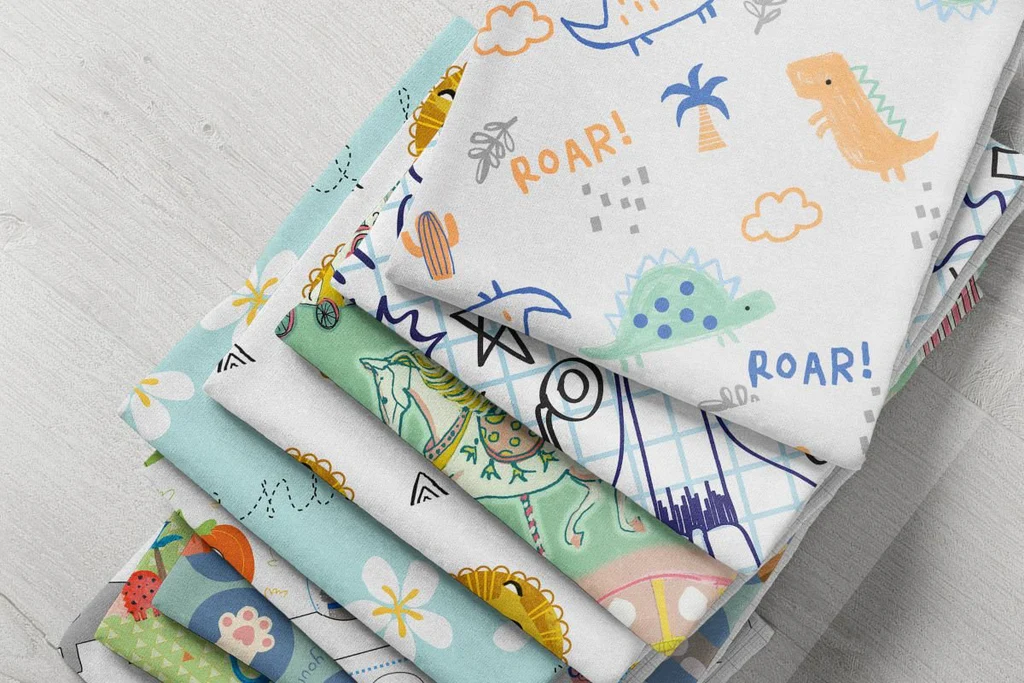Uncategorized
How to Choose the Right Fabric for Your Child’s Clothing
When selecting clothing for your child, fabric choice plays a crucial role in ensuring comfort, safety, and durability. With a wide variety of materials available, knowing how to choose the right one can make shopping much easier. This guide will help you pick the best fabrics for your child’s wardrobe by focusing on comfort, breathability, durability, and seasonality.
Prioritize Comfort
Children’s skin is more delicate and sensitive than adults, so comfort should always come first. Choosing soft and non-irritating fabrics helps prevent rashes and itching.
- Natural fibers like cotton, bamboo, and linen are ideal for everyday wear as they are soft and breathable.
- Avoid rough or coarse materials that may irritate the skin, such as wool blends or stiff synthetics.
- Always touch the fabric before purchasing to ensure it feels smooth and gentle.
Opt for Breathable Fabrics
Active children need clothes that allow proper airflow to keep them cool and dry throughout the day. Breathable fabrics are a must for preventing overheating.
- Cotton is one of the most breathable options and is hypoallergenic, making it a great choice for playtime or school.
- Bamboo fabric is another excellent option. It is moisture-wicking and eco-friendly.
- Jersey knit, a stretchy cotton blend, works perfectly for activewear, offering flexibility and ventilation.

Choose Durable Materials
Children’s clothing goes through a lot of wear and tear, so durability is a key factor. Choose fabrics that can withstand frequent washing and rough play.
- Denim is tough and long-lasting, making it perfect for jeans and jackets.
- Twill is soft yet durable, often used in school uniforms and casual pants.
- Polyester blends are wrinkle-resistant and stain-resistant, ideal for everyday outfits.
Match Fabrics to the Season
Different seasons require different fabrics to ensure your child is dressed appropriately and comfortably.
- For warmer months, lightweight materials such as cotton, linen, and chambray are ideal for keeping your child cool.
- In colder weather, heavier fabrics like fleece, flannel, and wool provide insulation and warmth.
- For rainy days, water-resistant options like nylon or polyester are great for raincoats or outdoor play.
Choose Hypoallergenic Options
If your child has sensitive skin or allergies, look for hypoallergenic fabrics. These are free from harsh chemicals and less likely to cause irritation.
- Organic cotton is grown without pesticides and is one of the safest options for sensitive skin.
- Silk, though less common, is gentle and hypoallergenic, perfect for special occasion outfits.
- Bamboo fabric is naturally antibacterial and an excellent choice for children with skin concerns.

Select Stretchy Fabrics for Active Kids
Kids love to run, jump, and play, so their clothing needs to move with them. Fabrics with a bit of stretch ensure flexibility and comfort.
- Spandex blends provide a comfortable stretch for activewear and casual clothing.
- Ribbed knits are naturally stretchy and maintain their shape, ideal for tops and leggings.
- Elastane-enhanced fabrics are a great choice for sportswear, allowing freedom of movement.
Look for Easy-to-Care Fabrics
Since kids’ clothes require frequent washing, it is important to choose materials that are easy to maintain without losing quality.
- Pre-shrunk cotton retains its size after multiple washes, ensuring the clothes fit properly for longer.
- Polyester blends are resistant to wrinkles and stains, making them low-maintenance.
- Always check the care label to ensure the fabric can be washed and dried easily.
Consider Eco-Friendly Materials
For parents who prioritize sustainability, eco-friendly fabrics are an excellent choice. They are not only better for the environment but also safer for children.
- Organic cotton is free from harmful chemicals and produced sustainably.
- Hemp is durable, breathable, and naturally resistant to bacteria.
- Recycled polyester is a great option for reducing environmental impact while still offering durability.
Check Fabric Weight and Thickness
The weight and thickness of the fabric determine its suitability for certain activities and weather conditions.
- Lightweight fabrics like cotton and linen are great for summer tops, shorts, and dresses.
- Medium-weight fabrics such as twill and jersey are versatile for year-round use.
- Heavier fabrics like fleece and wool are perfect for jackets, coats, and winter wear.
Test the Fabric Before You Buy
Whenever possible, perform a few simple tests to ensure the fabric meets your expectations for quality and comfort.
- Stretch the fabric gently to check if it maintains its shape.
- Scrunch it in your hand to see how easily it wrinkles.
- Rub it against your skin to feel the texture and ensure it is soft and comfortable.
Conclusion
Choosing the right fabric for your child’s clothing is essential for ensuring comfort, practicality, and durability. By prioritizing natural, breathable, and hypoallergenic materials, you can build a wardrobe that is both stylish and functional. Always consider the season, your child’s activity level, and any sensitivities when selecting fabrics. With careful attention to fabric choice, you can keep your little one comfortable and happy in every outfit.

